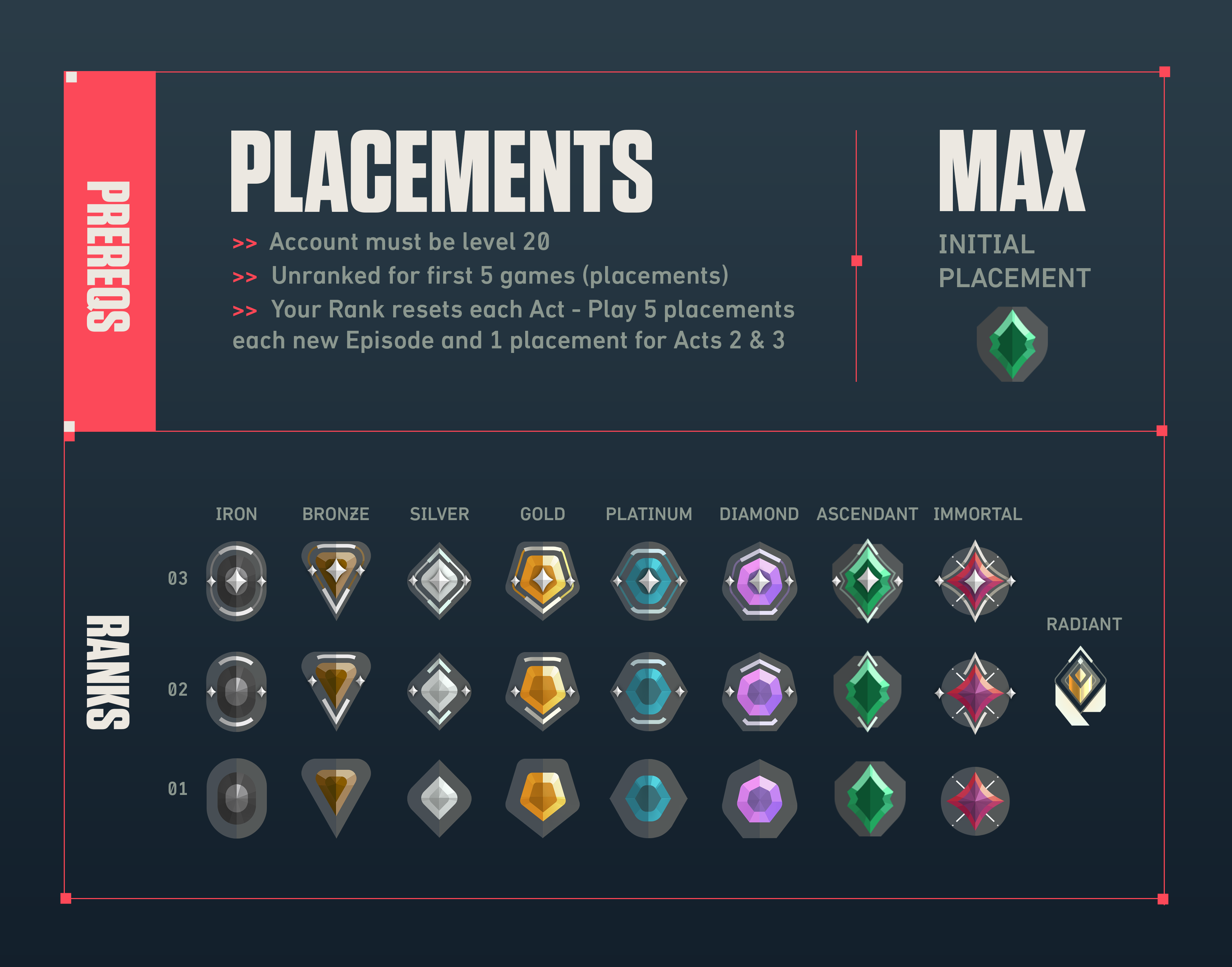How Valorant’s Ranking System Works
Valorant’s competitive system features nine ranks—each with three tiers, except Radiant. Your rank is determined by wins, personal performance, and consistency, ensuring fair matchmaking and rewarding skillful play.

Valorant Rank Overview
Valorant’s ranked mode unlocks at account level 20. From there, players climb a structured ladder of ranks from lowest to highest:
- 1). Iron
- 2). Bronze
- 3).Silver
- 4). Gold
- 5). Platinum
- 6). Diamond
- 7). Ascendant
- 8). Immortal
- 9). Radiant (top 500 per region)
Each rank (except Radiant) has three tiers, from Iron 1 to Immortal 3, with Radiant standing alone at the top.
What Determines Your Rank in Valorant Valorant ranks are influenced by three core systems:
Matchmaking Rating (MMR)
MMR is a hidden number that reflects your true skill level. Riot Games uses MMR to match you against similarly skilled players.
- Win streaks raise your MMR quickly
- Losing to lower-ranked players decreases it faster
- MMR influences how much Rank Rating (RR) you gain or lose
- If your MMR is higher than your current rank, you’ll earn more RR per win and lose less per loss—a fast track for ranking up.
Rank Rating (RR)
RR is the visible point system that moves you between tiers and ranks. You earn RR by winning matches and, in lower ranks, by performing well individually.
- Win: Gain 10–50 RR
- Loss: Lose 10–30 RR
- Each tier requires 100 RR to rank up
- Exceptional performances in promotion games can result in bonus RR or rank skips, while consistent losses may lead to demotion.
At lower ranks, your personal performance (kills, assists, impact rounds) can help accelerate your climb. However, in Ascendant and above, wins are all that matter—your RR only changes based on whether your team wins or loses. Valorant Rank Distribution (Approximate) Here’s how the player base is generally distributed across ranks:
- Iron – 5%
- Bronze – 15%
- Silver – 25%
- Gold – 20%
- Platinum – 15%
- Diamond – 10%
- Ascendant – 5%
- Immortal – 3%
- Radiant – <1%